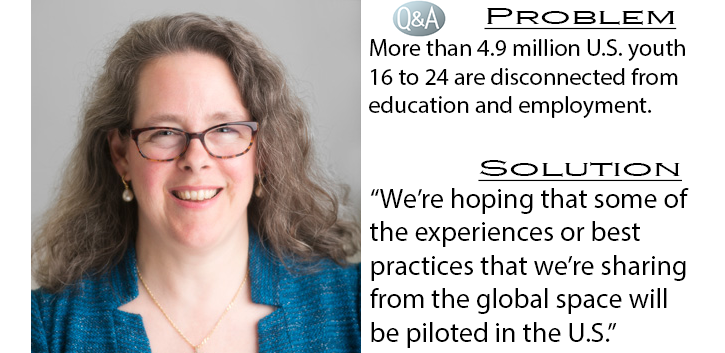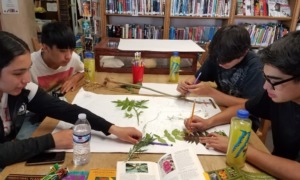Angela Venza is regional director for the Americas at the International Youth Foundation. At a meeting at the Annie E. Casey Foundation in Baltimore in October, she talked about the (Re)Connecting Youth project, funded by the Robert Wood Johnson Foundation.
The project matches youth organizations in the U.S. working with “opportunity youth” – youth who are either not in school or working – with organizations working with similar populations in Central and South America. So far, it has matched an organization in Baltimore with one in Tijuana, Mexico, with more to be matched in the future. The project was spurred by the fact that In the United States more than 4.9 million youth 16 to 24 are disconnected from education and employment, and the need for solutions to address the problem.
 OST Hub editor Sara Hill asked what youth organizations in the U.S. can learn from Latin America organizations, the next steps for the project and what makes this project different than others.
OST Hub editor Sara Hill asked what youth organizations in the U.S. can learn from Latin America organizations, the next steps for the project and what makes this project different than others.
Q: It isn’t often that international youth organizations work in the U.S. What makes this different?
A: Because IYF is based in the U.S., in Baltimore, which has many challenges, we felt that we could bring what we’re learning back to the U.S. The Robert Wood Johnson Foundation came to us, and asked us to show how global efforts could contribute to the work here. They asked us if we would be interested in working with them, specifically opportunity youth, who are out-of-school youth, who face similar challenges here and abroad. We basically co-designed the program with them, and started in March 2016.
Q: Are you planning on matching more cities in the U.S. and Latin America?
A: Yes. We have New Orleans and Belo Horizonte, Brazil. We have one more match coming up between New Mexico and Chile. The criteria for matching them are picking locations within the United States that provide diversity, cities that are struggling with the issue and aren’t as abundantly funded, organizations in the U.S. who have a need and are open to learning other ideas, innovations, different approaches. One of the reasons that we’re looking at New Mexico is because they have a large Native American population who are disconnected. The goal to identify groups abroad that do a holistic approach to working with youth — for example, how socioemotional competencies are integrated into workplace learning.
Q: What is the end game?
A: I think what we’re hoping to do is expose people to global approaches and organizations abroad who are struggling with the same challenges, and getting that message out there. What we’ve discovered is that by sharing these experiences it helps folks take a fresh look at what they’re doing. It’s not that they’re doing it wrong, but they might be able to learn what they can do better or differently, or learn something that they hadn’t thought about before. We’re hoping that some of the experiences or best practices that we’re sharing from the global space will be piloted in the U.S.
































